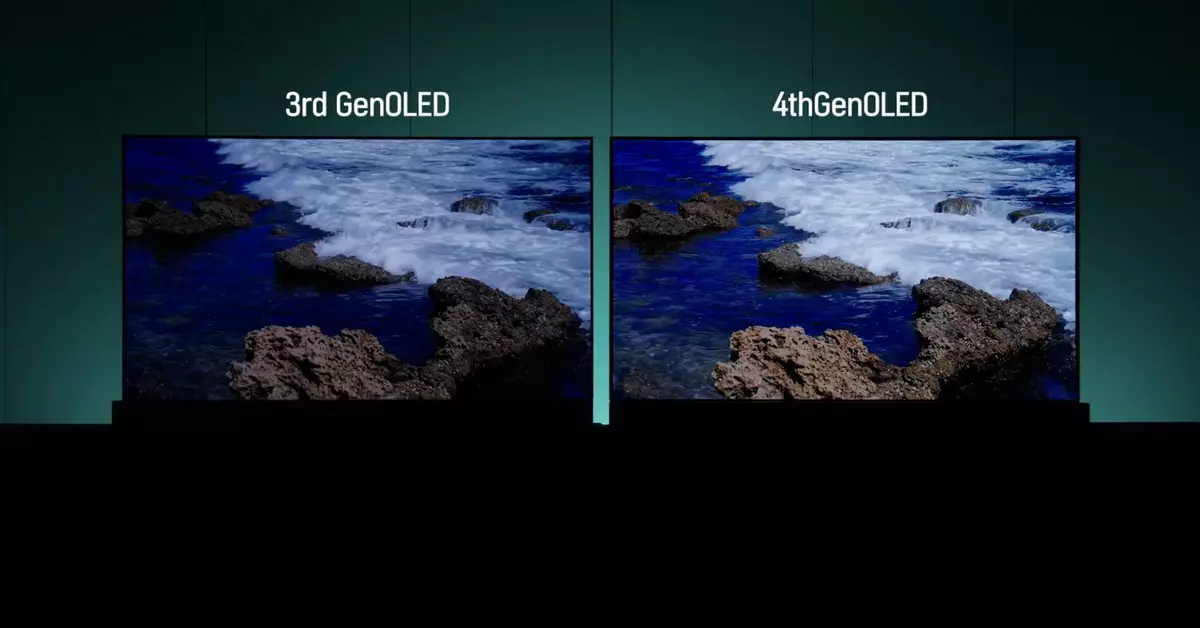In the ever-evolving landscape of display technology, LG Display has long been a frontrunner. With the recent unveiling of their groundbreaking OLED advancements, the spotlight has shifted slightly towards the future of visual experiences. However, this year’s CES saw a notable absence of LG Display’s signature bold presentations. Instead, Panasonic emerged as the unexpected purveyor of details regarding LG’s latest OLED panel innovations. This article explores the implications of this technology and what it means for consumers and competitors alike.
At CES this year, it was Panasonic that took center stage, showcasing its flagship models, which prominently featured LG Display’s OLED technology. The Z95B and LG G5 were positioned as the vanguards of this new technology, highlighting the growing trend of collaborative efforts between companies in the tech arena. Despite LG Display not showcasing itself in the limelight, the enthusiasm surrounding the new OLED capabilities is palpable. The partnership reflects a broader strategy where sharing advancements can lead to enhanced market presence, allowing companies like Panasonic to amplify the strength of LG’s offerings while solidifying their own market position.
Revolutionary Tandem OLED Design
The crux of LG Display’s innovation lies in its new four-layer tandem OLED structure, a significant upgrade from the three-stack configuration previously utilized. This pioneering design claims to deliver a staggering 33% increase in brightness, reaching a maximum of up to 4,000 nits. Such brightness levels not only set a new benchmark in OLED technology but also cater to the ambitious expectations of consumers in the “AI TV era.” While the mention of AI might incite skepticism amongst enthusiasts, the technological progress remains undeniable.
The four-layer design operates by stacking independent layers of RGB elements, a method that amplifies the overall light output. By integrating two additional layers of blue alongside separate red and green elements, LG Display has dramatically enhanced the performance of their OLED panels. This optimized structure ensures that users will experience vibrant colors and deeper contrasts, elevating the viewing experience to new heights.
With the ongoing rivalry between leading display manufacturers, LG and Samsung are at the forefront of the OLED brightness wars. Samsung’s introduction of its QD-OLED screen demonstrates a fierce competition in producing superior display technologies. While Samsung opts for a glare-free finish to enhance the viewing experience further, LG has chosen to maintain a classic glossy finish, albeit with advanced ultra-low reflective technology. This approach highlights the distinct philosophies of each brand as they carve their paths in the display market.
Furthermore, energy efficiency has seen notable improvements with the latest generation of LG OLED displays. With color brightness now reaching 2,100 nits—40% higher than its predecessor—LG is not just increasing brightness but also enhancing energy conservation. This balance between vibrancy and sustainability positions LG Display to capture the interest of eco-conscious consumers while addressing performance demands.
Implications for Consumers
While LG Display’s advancements signal a bright future for OLED technology, the implications for consumers are both exciting and complex. The promise of enhanced brightness, perfect blacks, and outstanding viewing angles reflects a maturity in OLED technology that has developed through relentless innovation. However, these advancements come with higher price points, which may not be accessible for all consumers.
For avid home theater enthusiasts and gamers, the investment in such advanced displays is often considered worthwhile, enhancing the overall experience whether watching high-definition films or engaging in fast-paced gaming. With a slew of products on the horizon that will incorporate LG Display’s new panel technologies, consumers should be informed and discerning when considering their next upgrade.
As we look toward the future of display technology, LG Display’s latest innovations stand as a testament to what is possible in the realm of OLED. While Panasonic might have played the role of the messenger this CES, the developments being ushered in promise to shape the industry for years to come. With improved brightness, energy efficiency, and a commitment to preserving the unique qualities that make OLED a favorite among users, LG Display is poised to remain a leader in the competitive display market. As always, keeping an eye on consumer needs and technological advancements will be crucial for brands looking to thrive in this dynamic environment.

